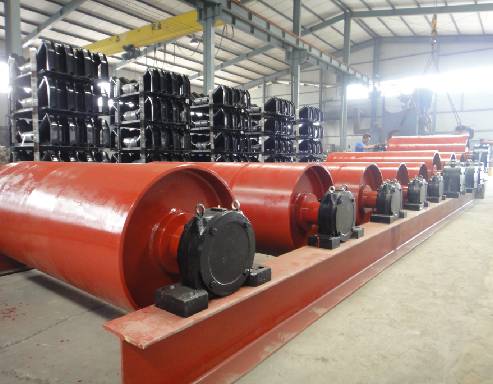 Afrikaans
Afrikaans  Albanian
Albanian  Amharic
Amharic  Arabic
Arabic  Armenian
Armenian  Azerbaijani
Azerbaijani  Basque
Basque  Belarusian
Belarusian  Bengali
Bengali  Bosnian
Bosnian  Bulgarian
Bulgarian  Catalan
Catalan  Cebuano
Cebuano  Corsican
Corsican  Croatian
Croatian  Czech
Czech  Danish
Danish  Dutch
Dutch  English
English  Esperanto
Esperanto  Estonian
Estonian  Finnish
Finnish  French
French  Frisian
Frisian  Galician
Galician  Georgian
Georgian  German
German  Greek
Greek  Gujarati
Gujarati  Haitian Creole
Haitian Creole  hausa
hausa  hawaiian
hawaiian  Hebrew
Hebrew  Hindi
Hindi  Miao
Miao  Hungarian
Hungarian  Icelandic
Icelandic  igbo
igbo  Indonesian
Indonesian  irish
irish  Italian
Italian  Japanese
Japanese  Javanese
Javanese  Kannada
Kannada  kazakh
kazakh  Khmer
Khmer  Rwandese
Rwandese  Korean
Korean  Kurdish
Kurdish  Kyrgyz
Kyrgyz  Lao
Lao  Latin
Latin  Latvian
Latvian  Lithuanian
Lithuanian  Luxembourgish
Luxembourgish  Macedonian
Macedonian  Malgashi
Malgashi  Malay
Malay  Malayalam
Malayalam  Maltese
Maltese  Maori
Maori  Marathi
Marathi  Mongolian
Mongolian  Myanmar
Myanmar  Nepali
Nepali  Norwegian
Norwegian  Norwegian
Norwegian  Occitan
Occitan  Pashto
Pashto  Persian
Persian  Polish
Polish  Portuguese
Portuguese  Punjabi
Punjabi  Romanian
Romanian  Russian
Russian  Samoan
Samoan  Scottish Gaelic
Scottish Gaelic  Serbian
Serbian  Sesotho
Sesotho  Shona
Shona  Sindhi
Sindhi  Sinhala
Sinhala  Slovak
Slovak  Slovenian
Slovenian  Somali
Somali  Spanish
Spanish  Sundanese
Sundanese  Swahili
Swahili  Swedish
Swedish  Tagalog
Tagalog  Tajik
Tajik  Tamil
Tamil  Tatar
Tatar  Telugu
Telugu  Thai
Thai  Turkish
Turkish  Turkmen
Turkmen  Ukrainian
Ukrainian  Urdu
Urdu  Uighur
Uighur  Uzbek
Uzbek  Vietnamese
Vietnamese  Welsh
Welsh  Bantu
Bantu  Yiddish
Yiddish  Yoruba
Yoruba  Zulu
Zulu Guidelines for Selecting the Right Conveyor Trough Rollers for Your System
Understanding Conveyor Trough Rollers Essential Components for Efficient Material Handling
In the realm of industrial material handling, conveyor systems play a pivotal role in enhancing operational efficiency. Among the critical components of these systems are conveyor trough rollers. These specialized rollers are specifically designed to facilitate the movement of bulk materials along the conveyor belt, ensuring a smooth, reliable, and cost-effective operation. This article delves into the function, design, types, and advantages of conveyor trough rollers, highlighting their importance in various industrial applications.
Function of Conveyor Trough Rollers
Conveyor trough rollers serve as the backbone of a conveyor system. Positioned at critical points along the conveyor belt, they provide support and guidance, allowing materials to move seamlessly from one location to another. Their primary functions include reducing friction, enhancing belt alignment, and providing load support. By maintaining the proper shape of the conveyor belt, trough rollers help prevent spilling or misalignment of materials, ultimately ensuring a continuous, efficient flow of goods.
Design and Composition
The design of conveyor trough rollers is crucial for their performance. These rollers typically feature a cylindrical shape, allowing them to guide the conveyor belt while minimizing resistance. Most conveyor trough rollers consist of a steel or plastic core, with the outer surface often coated in rubber or other materials to increase durability and grip. Additionally, trough rollers are designed to be slightly angled, forming a 'trough' that naturally contains the material being conveyed. This design is particularly beneficial for handling bulk materials, such as coal, grains, or aggregates, which can easily spill off flat surfaces.
Types of Conveyor Trough Rollers
Conveyor trough rollers come in several variations, each tailored to meet specific operational needs
2. Impact Rollers These rollers feature additional cushioning to absorb impact forces when heavy materials are loaded onto the conveyor, thereby extending the conveyor system's life.
3. Return Rollers Positioned on the underside of the conveyor, return rollers help support the belt as it returns to the starting point, preventing sagging and maintaining structural integrity.
conveyor trough rollers

4. Self-Cleaning Rollers These rollers are designed to minimize material build-up by incorporating features that help dislodge materials sticking to the roller surface.
5. Heavy-Duty Rollers Constructed for high-load applications, heavy-duty rollers are made from robust materials and designed to carry significantly more weight than standard rollers.
Advantages of Using Conveyor Trough Rollers
Implementing conveyor trough rollers in your material handling system offers several benefits
- Enhanced Efficiency By reducing friction and improving belt alignment, trough rollers allow for faster material transport, ultimately decreasing downtime and increasing productivity.
- Reduced Operating Costs Durable rollers can significantly lower maintenance and replacement costs, as they are designed to withstand harsh operational conditions and heavy loads.
- Improved Safety The trough design helps contain materials, reducing the risk of spills and accidents, which is especially important in environments with heavy machinery or in construction sites.
- Versatility Conveyor trough rollers can be used in a wide range of industries, including mining, agriculture, manufacturing, and logistics, making them a versatile solution for various material handling challenges.
Conclusion
Conveyor trough rollers are integral components of efficient material handling systems. Their design, functionality, and ability to improve operational efficiency make them indispensable in moving bulk materials safely and effectively. As industries continue to evolve and demand more reliable solutions for material transport, the importance of high-quality conveyor trough rollers will only increase. Investing in the right rollers, tailored to specific operational needs, can lead to significant improvements in productivity and cost efficiency. As such, understanding the intricacies of conveyor trough rollers is essential for any business aiming to optimize its material handling processes.
-
Revolutionizing Conveyor Reliability with Advanced Rubber Lagging PulleysNewsJul.22,2025
-
Powering Precision and Durability with Expert Manufacturers of Conveyor ComponentsNewsJul.22,2025
-
Optimizing Conveyor Systems with Advanced Conveyor AccessoriesNewsJul.22,2025
-
Maximize Conveyor Efficiency with Quality Conveyor Idler PulleysNewsJul.22,2025
-
Future-Proof Your Conveyor System with High-Performance Polyurethane RollerNewsJul.22,2025
-
Driving Efficiency Forward with Quality Idlers and RollersNewsJul.22,2025





























